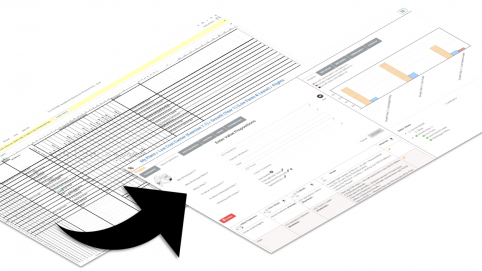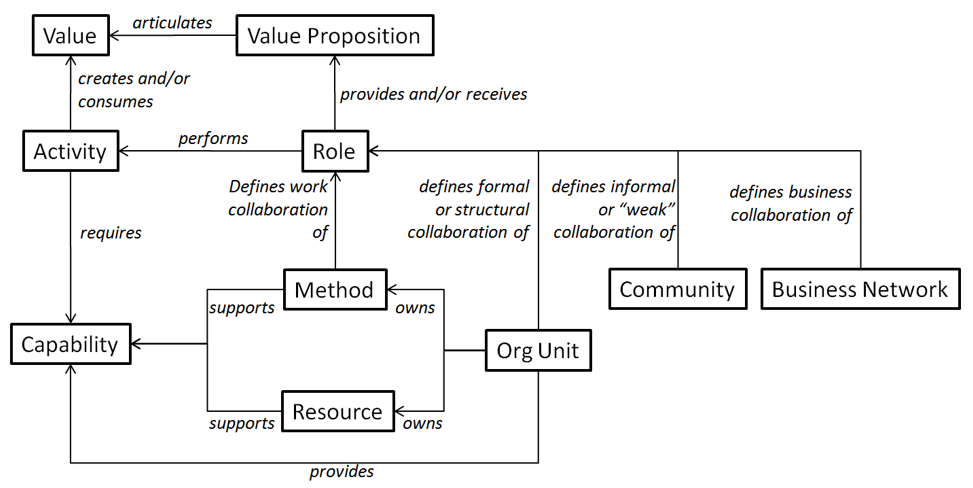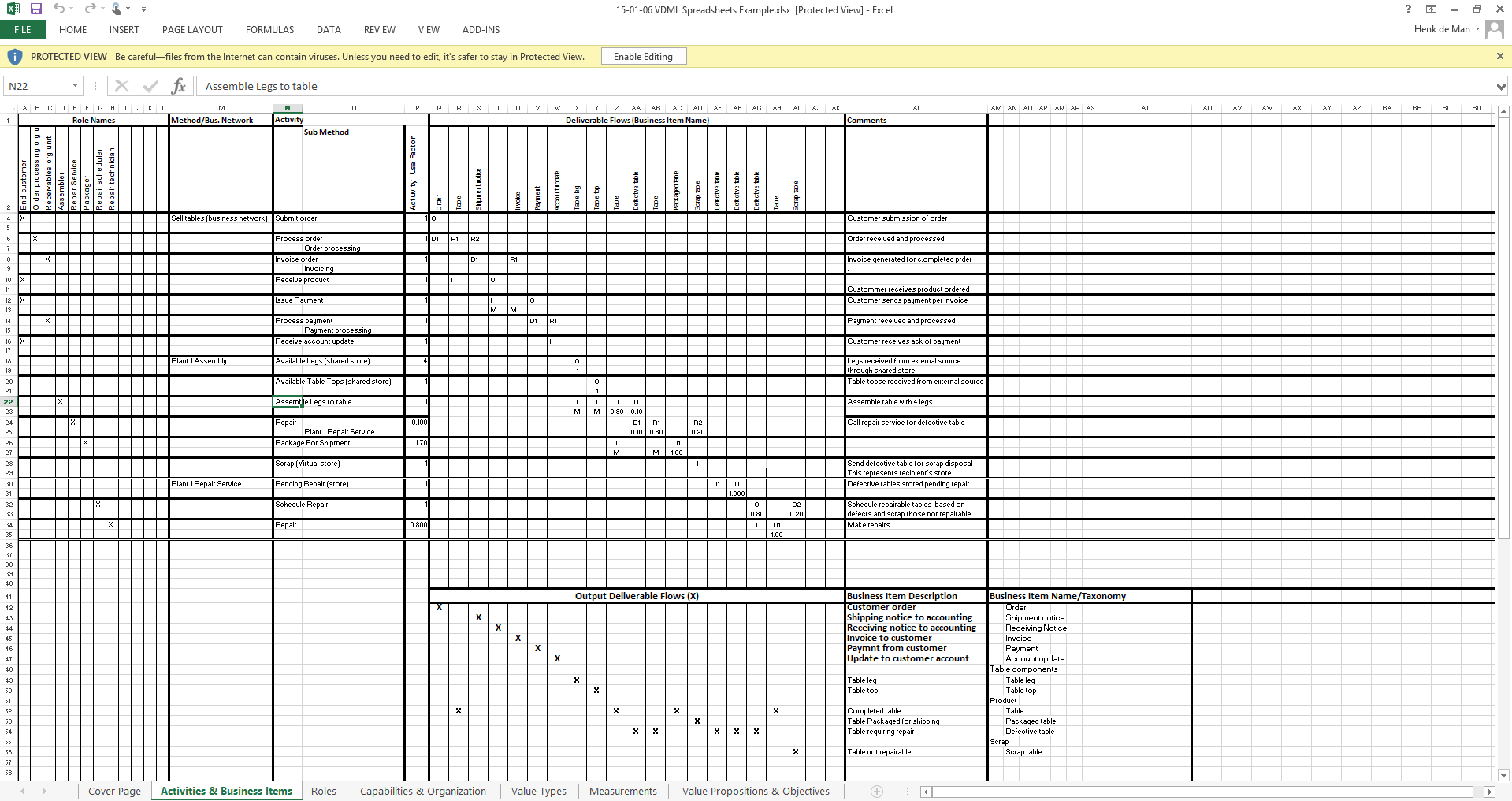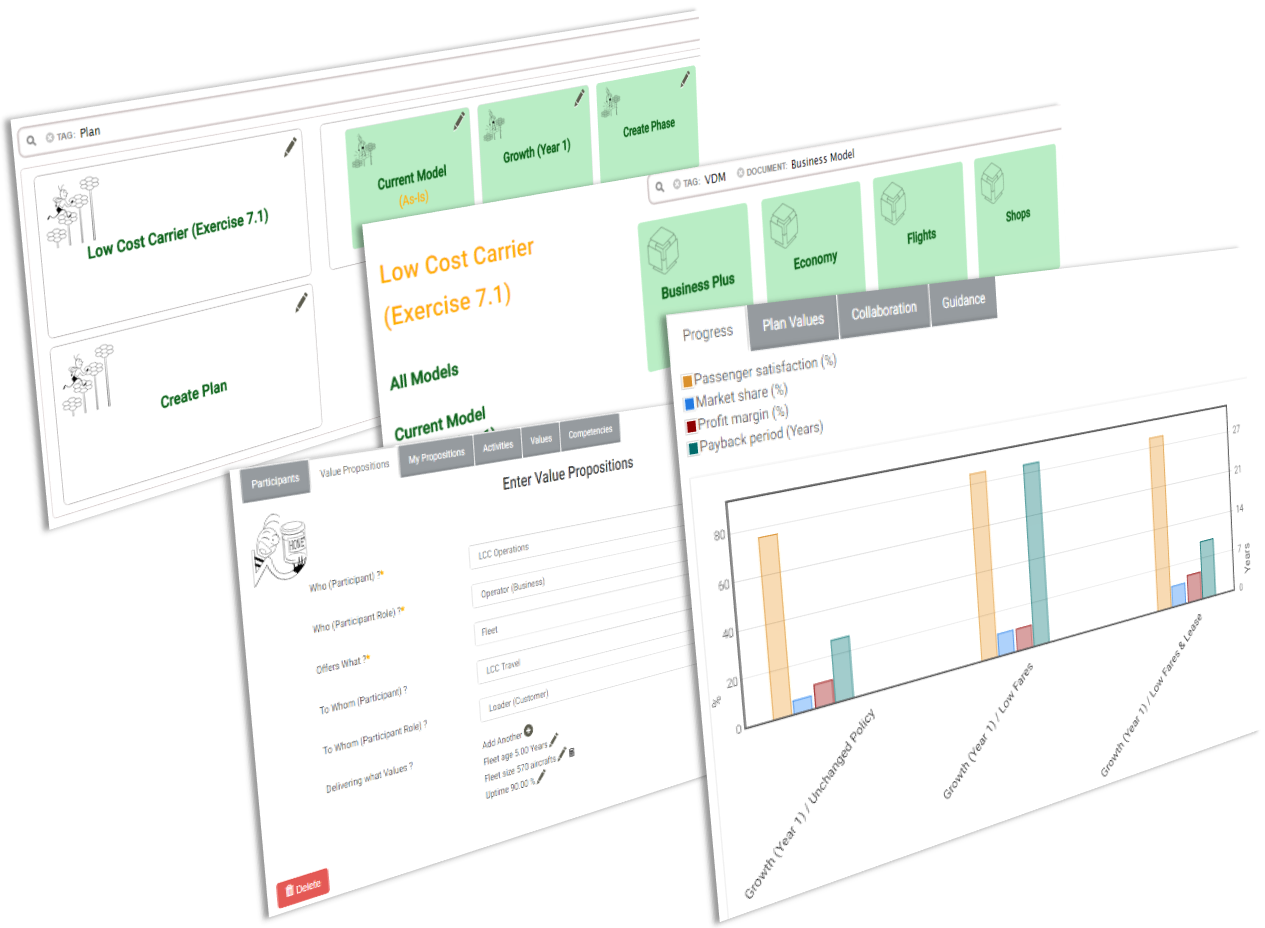By Henk de Man
Why Business Model Planning?
Everyone knows that business models aren’t invariants, but that they come and go in ever higher frequency. In order to stay in business, people have to constantly think about innovation and transformation of their business models. People also know that, sooner or later, their businesses have to become “digital enterprises”, whereby the new enablers of Big Data, Cloud, Mobility and Internet of Things are deployed strategically, whereby new business models will emerge and others will need to be transformed significantly. Moreover, businesses become more and more networked, whereby businesses have to continuously adapt themselves, to remain active players in their business ecosystems. This causes a lot of stress when businesses, and their consultants, want to steer based on stomach feeling, or want to steer based on just some ideas that are brainstormed together.

What does Business Model Planning do?
Here is a definite need for something that enables rigorous prototyping of ideas and strategy, whereby alternatives can be analyzed and their impact on value objectives can be estimated, and whereby strategic planning can be done continuously and dynamically. We will denote this as “Continuous Business Model Planning” (CBMP).
How is Business Model Planning done today?
Note that we are not saying that the creative means that people use to shape their minds, such as Business Model Canvas, Strategy Map, and others, aren’t good. They are very good. But the point is: how do we get from ideas to plans that work, and from static means to something that is dynamic, and from very high-level and abstract means to something that really takes the complexity of the new reality into account, in a way that can be handled and comprehended by the business user.
If people want to go beyond this, they can use spreadsheets, or they dig into Enterprise Architecture, or they (let) apply mathematical modeling for optimization or simulation, to find optimum solutions for specific problems. All of these are useful, but should be applied to where they are good at. But none of these really helps further to address the challenge as sketched above. Mathematical modeling is a black box to most people, and works best when applied to well-defined and focused problems. When business people want to find answers to certain questions, they can hire quants that seek answers by making and solving their models. But this does not provide a means for the vast community of business users that want to mold and evaluate their business and business plans continuously. Enterprise Architecture helps to structure the business but requires deep modeling skills to do so, and is less suitable to business people therefore. It also produces static pictures of the business, at a point in time. It is not dynamic. And moreover: Architecture models “do” nothing. They don’t calculate the impact of business changes on value objectives of the business.
Spreadsheets come more close. Most business people are familiar with them. The question is: can spreadsheets serve to support CBMP, given all complexity and challenges of the new business reality? We want to address this question in more detail. But before we do that, we should first understand a bit better what the need is that we have to fulfill.
Challenges with today’s Business Model Planning
Spreadsheets are good at calculating things, based on formulas. When many factors play a role, things become complicated very fast however, but this is what spreadsheets do. However, this is not sufficient. VDMbee is looking for a way to continuously morph an ecosystem of business models, whereby impact on value objectives of the business is calculated instantaneously, and we want to do that in a way whereby we can gradually evolve from phase to phase (as-is, to-be, in multiple steps), and whereby we, per phase, can analyze and compare alternatives, etc. We do not want to just write up some formulas and then calculate things, but we want to understand how, both in as-is, and in multiple and emerging phases of to-be, the business works, or should best work, as a value creation and capturing machine. We want to know how the various parts of the business interact or need to interact with each other as well as with parts of the businesses of others, in order to achieve our goals and objectives. This means that something like “value formulas” are not considered in isolation, but as intrinsically interwoven with, or ingrained in, or based on the structure of the business and its relation to the ecosystem. Value creation and value capture has to do with how parts of the business, both intra- and inter-enterprise interact (collaborate). Based on that, and by applying the right resources and capabilities, value is created, exchanged and captured. The worlds of enterprise modeling and strategic planning have to be integrated, in a way that business users can comprehend and handle. We denote this type of modeling with “value delivery modeling”.

From hand-crafted spreadsheets to a common language: VDML by OMG
But how to do that in spreadsheets? A lot of business semantics is involved. And to define that based on just a set of interrelated worksheets, each containing many rows and columns, is very complicated. Even if one would succeed to do so, (s)he would have difficulty to understand his/ her own model the day after, let alone the difficulty of sharing the understanding of the model with others. It will be very difficult to maintain overly complex workbooks. Also, when different people would try to create their “value delivery models” in spreadsheets, each of them would need to “invent the wheel” of how to do that. Not only spreadsheet-technically, but also semantics-wise. One person would probably try another way of modeling things than another person would do. Unless there is a standard way of doing. And yes, recently the Object Management Group (OMG) has adopted a new standard in this area, called “Value Delivery Modeling Language” (VDML). This is a modeling language that supports modeling of business collaborations (and value networks), value propositions, value streams, capabilities, value contributions, and value exchanges in a consistent way, and in a way that also allows for integrated value measurement and calculation, whereby different scenarios can be analyzed, etc. See Figure 1 for a representation of its main concepts.
VDML is a language that starts from concepts that are nowadays common in business model frameworks. It gives these concepts “hands and feet”, and integrates them in a way that expresses how businesses really operate, collaborate and create and capture value. It can be used at both aggregated and detailed levels, and can serve to bridge from strategy to operation, and from business to IT. VDML is closely integrated with another OMG standard for measurement, called Structured Metrics Metamodel (SMM).
Assume now that people would attempt to create “value delivery models” in spreadsheets, based on VDML (and SMM). This would be a tremendously complicated task. A business model is defined in multiple dimensions, and multiple business models, each of which contains a lot of data, are interrelated in several ways. And all this is not just about one model, but will evolve over the time-line, via multiple phases, and per phase we need to analyze multiple alternatives, etc. It is simply too complicated for individual business users to even try modeling this in a spreadsheet. And even if they would manage, the model would show very complicated and would be very vast. Everything would just look as columns and rows, and it would be very difficult to find your way in this. See Figure 2 for an impression of a simplified and incomplete value delivery model.
An even bigger problem would be: how can a spreadsheet be re-used in different situations or environments, e.g. when applied to different businesses, or different parts of the business? When integration between sheets is just contained in the data, as it normally is, the spreadsheet would fall apart when someone would replace the data with other data. Hence, separation of “content” and “structure”, or “content” and “application” is required. But that would require advanced use of spreadsheets, including the use of macros. It would require programming skills, such as programming in Visual Basic for Applications if you would do it in Excel. The same skills would be required to enforce data consistency (very important for modeling!), and to implement other logic, such as for conditional user interface enabling and role-based access. In other words: application development skills would be required. But this is not what most business users are capable of doing and it is certainly not their ambition. It would be the significant task of an application developer to develop an, in this case, Excel-based VDML application for CBMP.


Impression of VDMbee Strategyplanner
VDMbee Strategyplanner: a Dashboard for decision making
Who today would develop such an application in Excel ? There are more appropriate state-of-art development tools available, including open source frameworks, to develop such an application on various platforms, including mobile platforms. This makes clear that “vanilla” spreadsheets are by no means a tool for business users to serve their CBMP need.
And by the way, there will be specialized companies that will develop VDML-based applications. The first of them is VDMbee, who developed a VDML- (and SMM-) based application for CBMP, called Strategyplanner (see Figure 3). VMP can also be considered a dashboard for decision making about future direction, based on business modeling.
VDMbee Strategyplanner has been developed as a Chrome app, and is available via the Google Web Store. VMP uses VDML and SMM as its underlying meta-model, and provides business-user oriented views. These views allow to work with the models in the context of a continuous strategic plan, consisting of phases and alternatives, and per phase or alternative, the business can be modeled in typical and easy-to-understand business model terms. The app itself supports the user in varying the models from alternative to alternative and to evolve the models from phase to phase. Defining models and working with them, does not feel like “traditional modeling” to the user, as the user interface guides the user in a structured and question & answer oriented way. The user is involved in “story telling” rather than “technical modeling”. The actual detailed models, as instances of the meta-model, are generated and adapted automatically, by the system, and “under the hood”.
And this use of models, based on a meta-model, brings another advantage over the use of spreadsheets: A spreadsheet is a model that is just contained in itself, whereby no information is “inter-operable”, i.e., information in spreadsheets is not structured in a way that allows for exchange with other applications for the same or other purposes. But as VDMbee Strategyplanner generates instances of the VDML & SMM meta-model, these models can be exchanged in structured format, e.g. JSON or XML (XMI) for insiders … And this way, these models, or parts of these models, can be used for downstream purposes, such as creation of executable business process models, web-services, enterprise application classes, etc.
Henk de Man (co-founder of VDMbee) (connect on linkedin: hdman)

